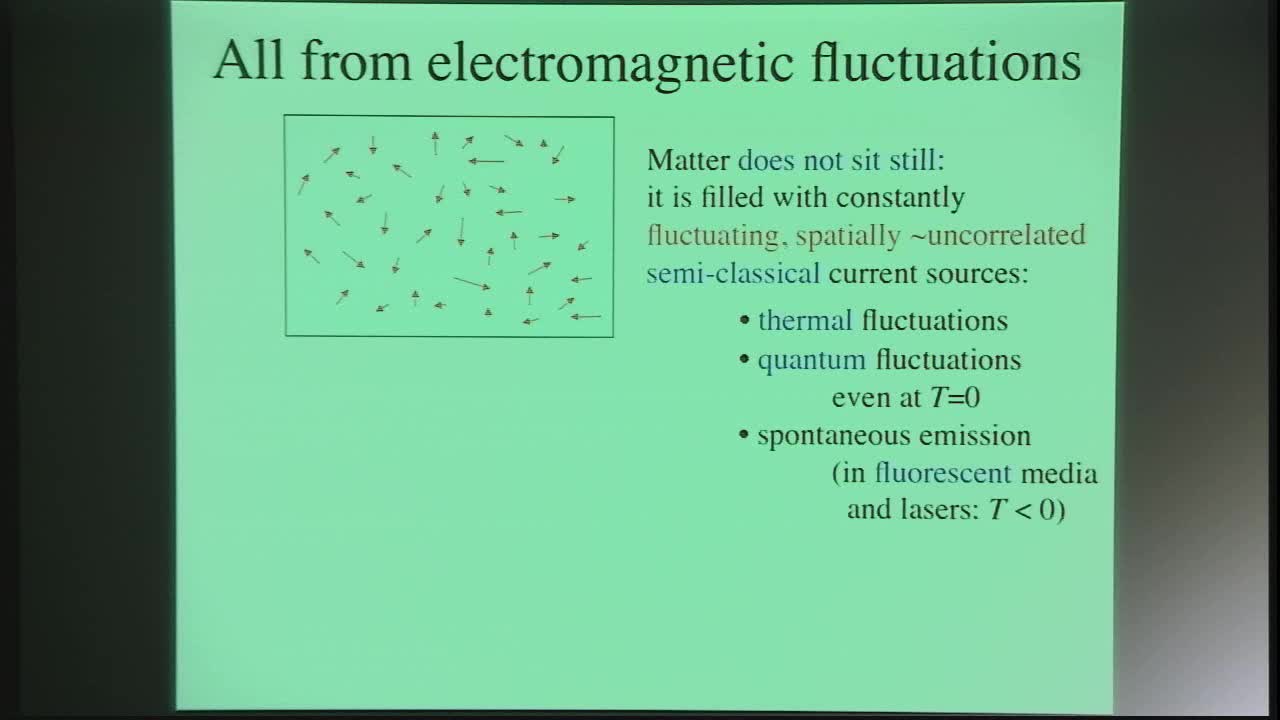From Virtual Photons to Quantum Pinwheels: Fluctuation Effects in Nanophotonics
Presenter
March 14, 2017
Abstract
At the smallest scales, matter is always in motion, with quantum and thermal fluctuations of charges filling the electromagnetic spectrum with noise (vacuum fluctuations and "virtual photons" even at zero temperature). This noise, in turn, gives rise to a remarkable range of phenomena: thermal radiation, spontaneous emission, van der Waals and Casimir forces, and laser linewidths. In the last 10 years, many new mathematical results have illuminated the behavior of these effects in complex nanostructured optical systems, where only crude approximations were previously possible. Mathematical transformations now allow forces to be expressed via an integral-operator log-determinant, and thermal radiation or fluorescence as an integral-operator norm, enabling new generations of efficient computational methods. By new methods to enforce delicate divergence cancellations, predictions of thermal "self-forces" on asymmetrical objects yield "quantum pinwheels" and "photon torpedoes". In combination with the SALT formulation of lasing, exact solutions for laser linewidths incorporating all known (and more) corrections simultaneously are now possible. Leveraging recent developments on the limits of light-matter interactions, we also obtain the first upper bounds on near-field thermal radiation. Despite the quantum nature of these fluctuations, all of the quantum and thermodynamic complexity is compartmentalized, via the fluctuation-dissipation theorem, into the correlation function of the noise sources, and the subsequent analysis is purely via classical wave theory.
